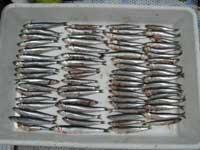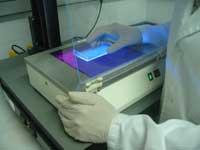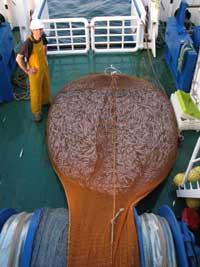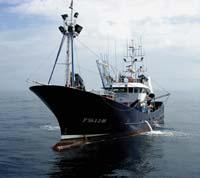Ending anchovy fraud
2011/02/27 Kortabitarte Egiguren, Irati - Elhuyar Zientzia

The question is that all anchovies are the species Engraulis encrasicolus: Gulf of Bizkaia, North Sea, Adriatic, Western Mediterranean, Cadiz Coast, Portuguese Coast and South Africa, all of them European anchovies. It is unique, although it can be of many origins. Therefore, it can happen that anchovies are marketed as from another origin, and as if they were anchovies of the Cantabrian, buy and eat those of Cadiz, Portugal or South Africa.
To avoid these frauds, the Azti-Tecnalia technology center and the UPV have managed to genetically identify the anchovy of the Bay of Biscay. This will make it possible to differentiate itself from specimens from other places and allow consumers to know that they are actually buying anchovy from the Cantabrian.

DNA analysis
Genetic testing is the most appropriate method to identify anchovy. In fact, the anchovies of the same species are morphologically equal, so their outer appearance is not enough to differentiate the anchovies of the Cantabrian from those of other places. Scientists from Azti-Tecnalia and the UPV have analyzed more than 3,000 anchovy specimens from various European coves ( Engraulis encrasicolus). The genome of all of them has been investigated to find the distinctives of each origin. Of course, they don't explore the entire genome. When the goal is to ensure that the content of an anchovy can is of this species, they study the changing regions of the genome that differ from one species to another and must be stable, as they must be equal in all individuals within one species. It doesn't seem like an easy task. In fact, individuals of a certain species share much of the genome (in the human species, for example, 99.9% of the genome is the same in all humans). However, the researchers have managed to completely separate the anchovies captured in the European Atlantic Arc, the Cantabrian coast and the Mediterranean.
This DNA analysis allows to determine the species and geographical origin of the fish, even if it is processed. This data is important if we take into account that 83% of the semi-preserved anchovies sold in 2010 in Spain came from other fishing grounds, according to data provided by the National Association of Manufacturers of Fish and Seafood Canned (Anfaco). This analysis therefore contributes to ensuring the quality of fresh, canned and transformed fish products. In addition, this method of identification is a basic tool to detect fraud with trade names that may mislead the consumer.

In the food industry it has become public on more than one occasion the disappointment of such establishments and the non-marketing of the product. These frauds occur mainly in foods that sell processed: minced meat, fish or pate in canned canned, cheeses... In these cases it is not possible to know at first sight which animal come from these foods, since they have lost all the visible distinctives when arriving at the buyer. DNA analysis is the almost only option to ensure product origin.
Published in 7k

Gai honi buruzko eduki gehiago
Elhuyarrek garatutako teknologia





